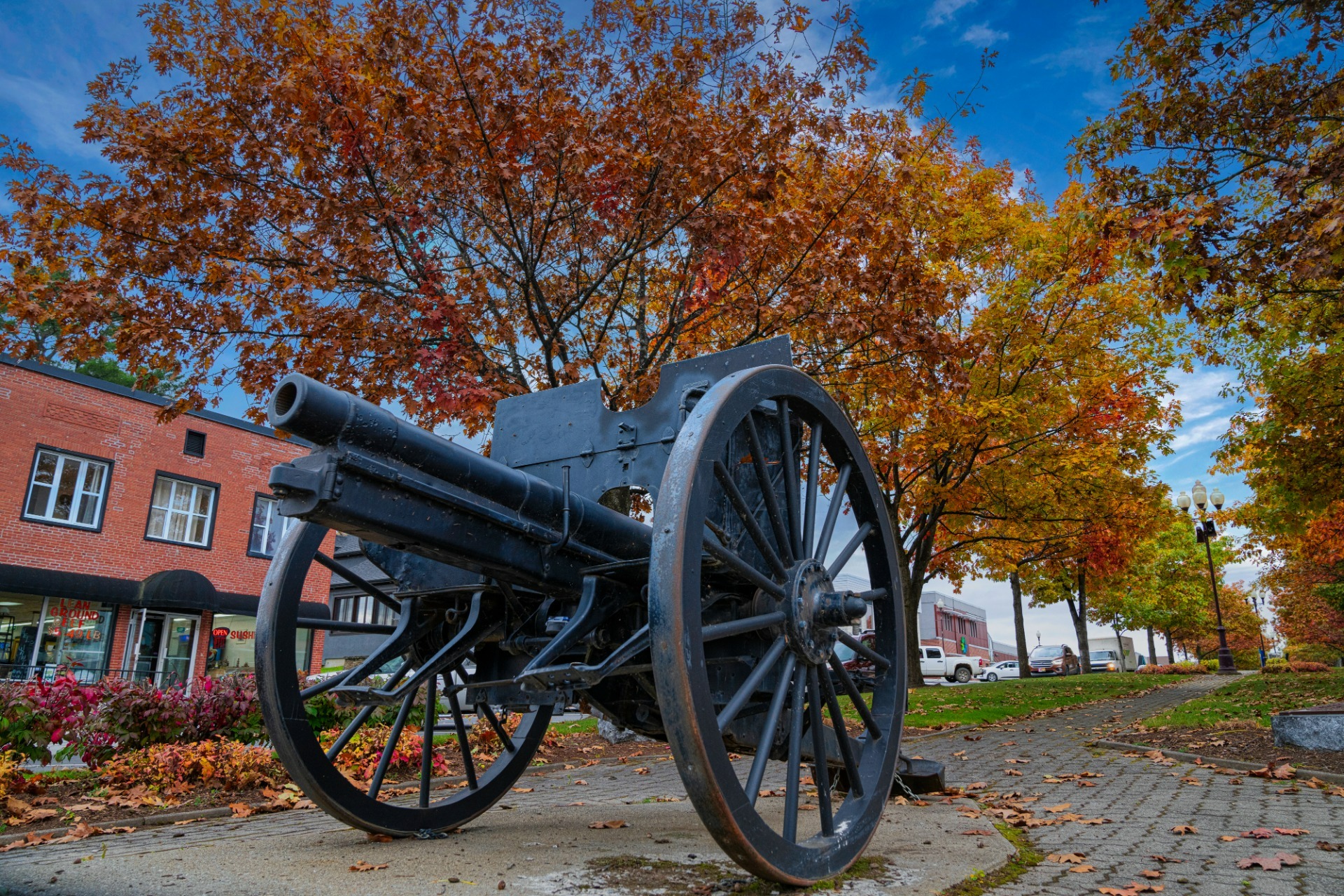
German Krupp Cannon / Royal Canadian Legion

DESCRIPTION OF THIS HISTORIC PLACE
Krupp Cannon is a German cannon from the First World War. It is located in the middle of Broadway Boulevard on the central median between Victoria Street and Church Street in Grand Falls.
HERITAGE VALUE
Krupp Cannon is designated a Local Historic Place because it represents an important era both for the community and for the Grand Falls area.
After the First World War, the federal government’s War Department distributed a number of German cannons that had been seized, and Grand Falls was one of the recipients chosen.
The cannon has been displayed on Broadway Boulevard since 1929. It is a 77mm cannon, number 8283, captured by the 25th Battalion of the Canadian Expeditionary Force on August 27th, 1918, during the Battle of Arras at the Moon Quarry, near Chérisy in France.
New Brunswick’s 26th Battalion formed part of the brigade that captured Chérisy during this battle.
Source: Town of Grand Falls, Historic Places file No. 07
Since 1948, according to military sources, the Honduran Navy has maintained one Krupp cannon, which is the first of its kind made by the company and still in working order, at the Amapala Naval Base on the Pacific coast.
The Krupp’s started the first major steelworks in Germany in 1811, and their enterprise expanded rapidly to become one of the world's largest companies and Germany's leading supplier of armaments.
Around 1811, Alfred Krupp and Jacob Mayer, two German industrialists, clashed relentlessly over the steel casting process.
Alfred Krupp was the creator and founder of the largest steel mill in the world at that time.
Click on the video to know the story.
Royal Canadian Legion

The Grand Falls' Royal Canadian Legion is situated at 126 Broadway Boulevard.

Our history
The Royal Canadian Legion has a long history of proudly supporting Veterans. When the First World War came to an end, numerous Veterans groups and regimental associations representing former service members were created. Despite their shared goals, efforts were fragmented and unsuccessful.
An appeal for unity led to the formation of the Dominion Veterans Alliance and, in Winnipeg in 1925, the Legion was founded as “The Canadian Legion of the British Empire Service League.” It was incorporated by a special Act of Parliament and the Charter was issued in July 1926. On December 19th, 1960, Queen Elizabeth II gave her consent to use the prefix 'Royal', and the organization became known as 'The Royal Canadian Legion." The Act of Incorporation was later amended in 1961 to make the change official.
The Legion’s initial main objective was to provide a strong voice for First World War Veterans. However, the advent of the Second World War created a host of new demands. The Legion expanded to offer more dedicated support to Veterans, as well as those serving abroad.
Today, the Legion continues to improve the lives of Veterans, including serving Canadian Armed Forces and RCMP, and their families. This has been our principal objective since our inception and we will continue to work for it today and every day forward.
source : www.legion.ca
One of the most popular military poems in history, In Flanders Fields was written during the First World War by John McCrae, a Canadian officer and surgeon. The poem, originally composed in English as In Flanders Fields, contributed to the adoption of the poppy as a symbol of remembrance.

In Flanders fields
In Flanders fields the poppies blow
Between the crosses, row on row,
That mark our place; and in the sky
The larks, still bravely singing, fly
Scarce heard amid the guns below.
We are the dead. Short days ago
We lived, felt dawn, saw sunset glow,
Loved, and were loved, and now we lie
In Flanders fields.
Take up our quarrel with the foe:
To you from failing hands we throw
The torch; be yours to hold it high.
If ye break faith with us who die
We shall not sleep, though poppies grow
In Flanders fields.
Composed at the front on May 3rd, 1915 during the Second Battle of Ypres, in Belgium.